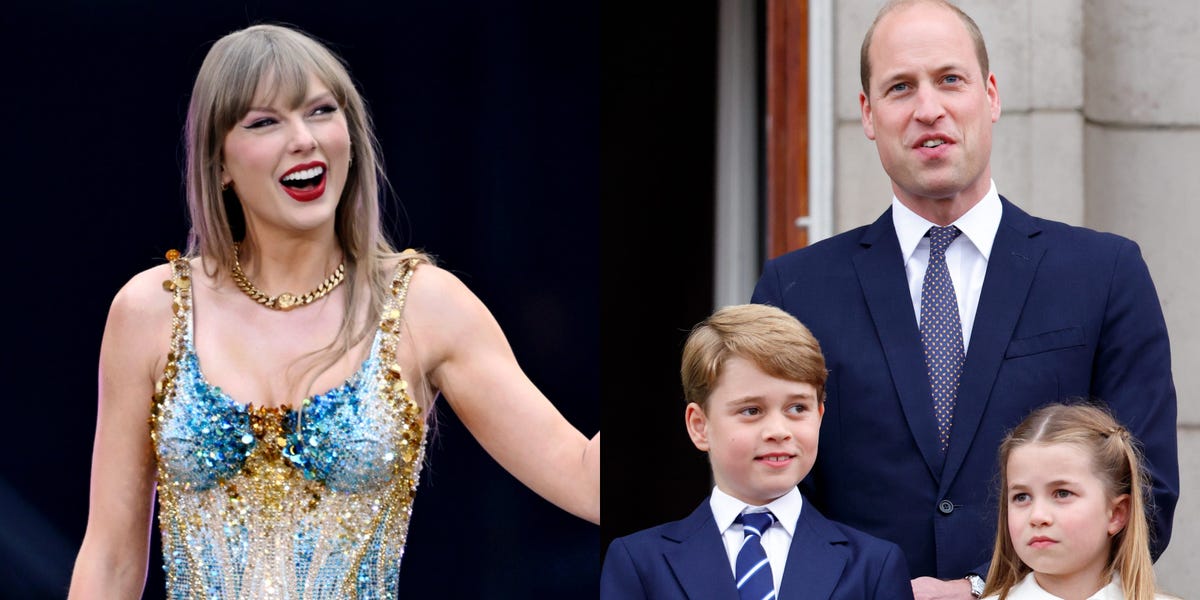Prince William’s Dance Moves: Prince William Dancing Shake It Off

Prince William’s energetic performance of Taylor Swift’s “Shake It Off” at a charity event has captured the attention of the public and media alike. His enthusiastic dance moves and infectious energy have been widely praised, showcasing a side of the royal that many had not seen before.
Public Reaction
The public’s reaction to Prince William’s dance has been overwhelmingly positive. Many have lauded his willingness to let loose and have fun, while others have praised his impressive dance skills. The performance has been seen as a refreshing departure from the more formal and reserved image that is often associated with the royal family.
Impact on Image
Prince William’s dance has had a significant impact on his public image. It has made him appear more relatable and down-to-earth, and has helped to humanize the often-distant figure of the future king. The performance has also shown that he is not afraid to embrace his playful side and connect with people on a more personal level.
The Cultural Impact of “Shake It Off”

Prince william dancing shake it off – Taylor Swift’s “Shake It Off” became a cultural phenomenon upon its release in 2014. The song’s catchy melody and empowering lyrics resonated with people around the world, making it a global anthem for resilience and self-acceptance.
The Message of Resilience and Self-Acceptance
The lyrics of “Shake It Off” encourage listeners to embrace their flaws and not let criticism or negativity define them. Swift sings about haters who try to bring her down, but she refuses to let their words affect her. Instead, she chooses to shake off the negativity and focus on the positive things in her life.
The song’s message of resilience and self-acceptance resonated with many people who had faced similar experiences. It became an anthem for those who had been bullied, criticized, or doubted. The song reminded them that they were not alone and that they could overcome any obstacle by believing in themselves.
Global Resonance, Prince william dancing shake it off
“Shake It Off” became a global hit, reaching number one in numerous countries around the world. It was praised by critics for its catchy melody and empowering lyrics. The song also became a popular choice for dance routines and was featured in several movies and TV shows.
The global popularity of “Shake It Off” demonstrated its universal appeal. The song’s message of resilience and self-acceptance resonated with people of all ages, cultures, and backgrounds. It became a symbol of hope and empowerment for those who had faced adversity.
Dance as a Form of Expression
Dance transcends the boundaries of language and culture, serving as a universal language of self-expression. Through intricate movements, graceful gestures, and rhythmic patterns, dancers articulate emotions, convey stories, and explore the depths of human experience.
Dance allows individuals to express their innermost thoughts and feelings, unconstrained by verbal limitations. It provides a safe and liberating space for personal exploration and self-discovery, enabling dancers to connect with their true selves and communicate their unique perspectives.
Emotional Expression
Dance is an expressive art form that allows dancers to convey a wide range of emotions, from joy and exuberance to sadness and anger. Through the fluidity of their movements and the intensity of their expressions, dancers evoke powerful emotions in their audience, creating a visceral connection that transcends words.
For example, the passionate tango embodies the fiery emotions of love and desire, while the graceful ballet conveys ethereal beauty and delicate fragility. Dance becomes a powerful tool for emotional catharsis, allowing dancers and audiences alike to release pent-up feelings and experience a profound emotional release.
Storytelling
Dance is not merely a form of entertainment; it is also a powerful storytelling medium. Through choreographed sequences and symbolic gestures, dancers narrate captivating tales that captivate audiences and leave a lasting impression.
From the epic battles depicted in traditional Chinese opera to the poignant love stories portrayed in contemporary ballet, dance has the ability to transport viewers to different worlds and immerse them in compelling narratives. It allows dancers to explore complex themes, delve into historical events, and share cultural traditions, making dance a vital form of storytelling.
Social and Political Commentary
Throughout history, dance has been used as a potent tool for social and political commentary. Dancers have leveraged their art form to raise awareness about important issues, challenge societal norms, and advocate for change.
For instance, the expressive dance style of Martha Graham reflected the social and political turmoil of the 20th century, while the vibrant rhythms of African dance have been used to celebrate cultural identity and protest against oppression. Dance becomes a powerful platform for activism, allowing dancers to amplify their voices and inspire social transformation.